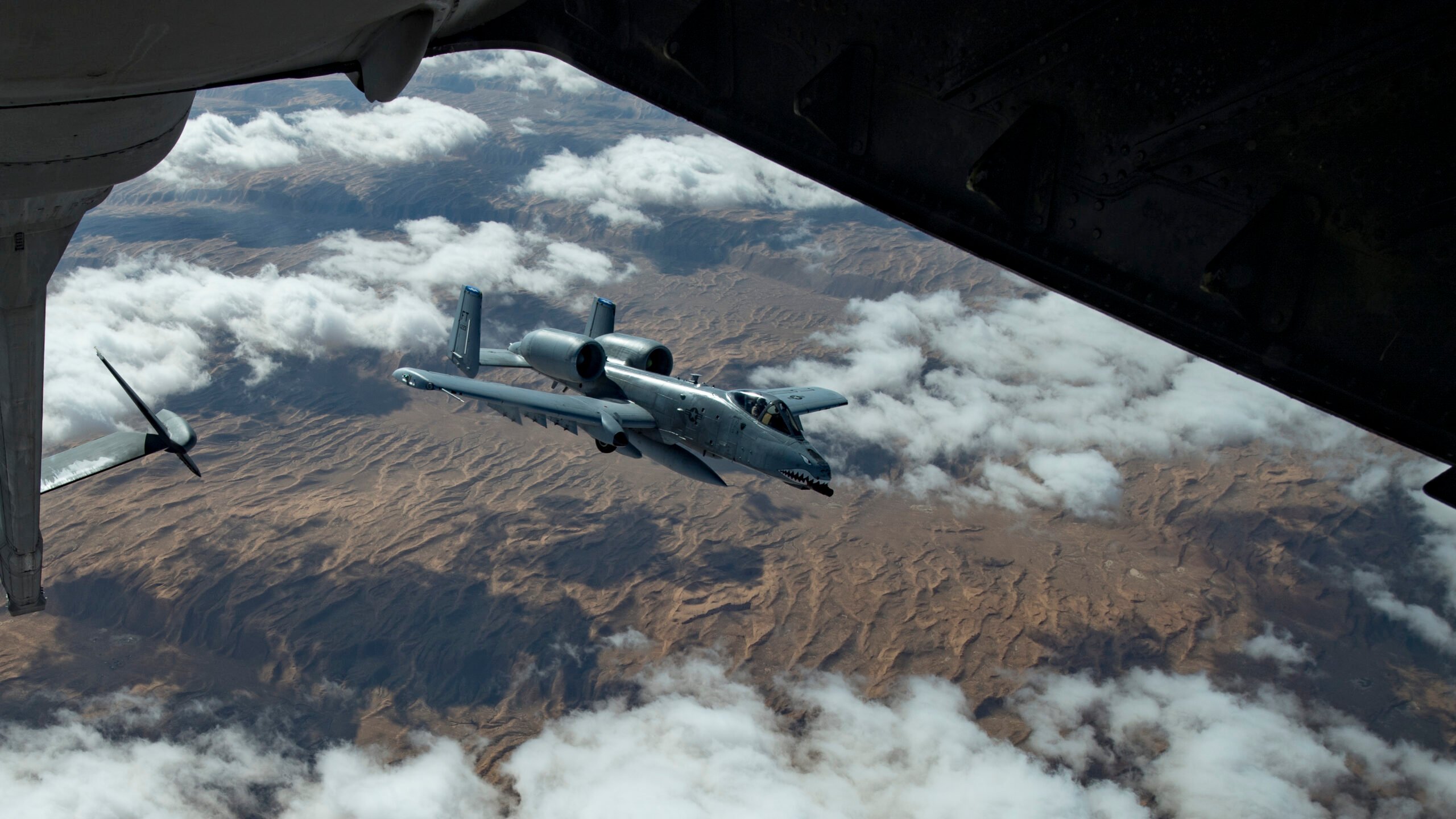
A U.S. Air Force A-10 Thunderbolt II departs a U.S. Air Force KC-10 Extender assigned to the 908th Expeditionary Air Refueling Squadron above the U.S. Central Command area of responsibility, Jan. 17, 2020. (U.S. Air Force/Staff. Sgt. Daniel Snider)
AFA AIR WARFARE SYMPOSIUM: Despite calls from former US defense officials for the Air Force to transfer some of its A-10 Warthog attack aircraft to Ukraine, there are no current plans for the service to give up its tank-busting planes, the Air Force’s top leaders said today.
“I’m not aware of any current plan, or even any discussion of a current plan to field or provide A-10s to the Ukrainians,” Air Force Secretary Frank Kendall said during a roundtable with reporters today at the Air Force Association’s Air Warfare Symposium.
Asked during a later roundtable, Air Force Chief of Staff Gen. CQ Brown gave a similar answer.
“I’m not aware of any discussions or plans inside the United States Air Force to provide A-10s to Ukraine,” he said. Although he did not speak specifically about Ukraine’s ability to absorb the A-10, he added that for any air force receiving new capabilities, it would take time to “train and get ready to do” a mission.
As a long line of Russian tanks and other vehicles push into Ukraine and drive toward Kyiv and other major cities, Ukraine has used everything at its disposal — fighter aircraft, drones and ground-launched missiles, among other capabilities — to try to take out the convoys. This morning, several outlets published op-eds by former US officials advocated for the US Air Force to supply Ukraine with unwanted A-10s for just that purpose.
Philip Breedlove, a former Air Force general and head of US European Command, and Kurt Volker, the US Special Representative for Ukraine Negotiations from 2017 to 2019, wrote that the Air Force could transfer any A-10s it plans to mothball to Ukraine as excess defense articles.
“Thanks to prior military exchange programs, Ukraine already has a small number of pilots trained to fly the A-10,” Breedlove and Volker wrote in an op-ed published by the Center for European Policy Analysis. “If spare parts and maintenance are required, use part of the US $1 billion funding to allow Ukraine to hire private contractors, rather than involving US personnel directly.”
Everett Pyatt, a former assistant secretary of the US Navy for shipbuilding and logistics in the late 1980s, argued in a Defense News op-ed that the Air Force should give up the three A-10 squadrons it had hoped to divest in fiscal 2022.
“This aircraft and its gun system were designed to counter an armored assault in Europe,” wrote Pyatt. “They proved effective in Desert Storm’s target-rich environment, quite similar to the current advancing Russian force. They also became the infantry’s friend in close-air support missions.”
One obvious problem with the idea of the Air Force transferring its A-10s to Ukraine is that it is required by law to retain all 281 Warthogs currently in its inventory. Although the service had hoped to send 42 A-10s to the boneyard this fiscal year, the FY22 NDAA late last year included language that prohibited any reductions.
Even if the US went ahead with transferring A-10s to Ukraine, it might be too late to have an impact in a war against Russia, said Richard Aboulafia, an aerospace expert with AeroDynamic Advisory.
“Many people, understandably, see that Russian column heading to Kiev and hear that distinctive A-10 BRRRT noise,” he told Breaking Defense. “But training crews isn’t a two-hour or two-day process. Making them proficient, and therefore helping them survive against targets that will be shooting back, takes weeks, and more likely months.”
“And if the Russians actually get serious about committing their air force, and achieve total air superiority, these A-10s would simply be destroyed not long after they took off,” he said.






















